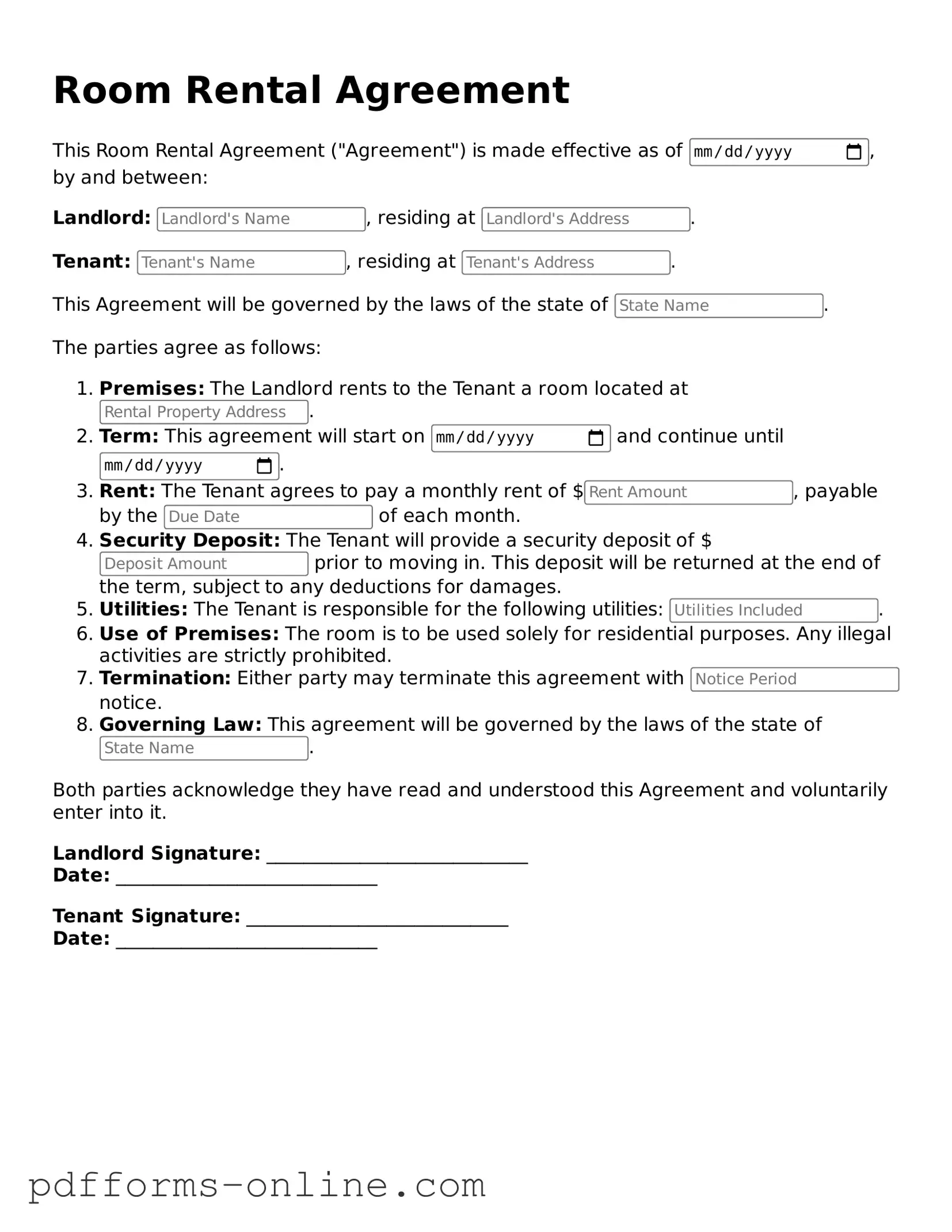The Room Rental Agreement is similar to a Lease Agreement, which is a more comprehensive document typically used for longer-term rentals. Both documents outline the terms and conditions under which a property is rented. They specify the rental amount, duration of the rental, and responsibilities of both the landlord and tenant. However, a Lease Agreement generally covers a longer timeframe, often a year or more, whereas a Room Rental Agreement may cater to shorter stays, such as month-to-month arrangements.
Another document akin to the Room Rental Agreement is the Sublease Agreement. This document is used when a tenant wishes to rent out their leased space to another individual. Similar to the Room Rental Agreement, it defines the rental terms, including payment amounts and duration. The key difference lies in that a Sublease Agreement is typically executed between a current tenant and a subtenant, while a Room Rental Agreement is directly between the landlord and the tenant.
A Rental Application is also related to the Room Rental Agreement. This document is used by prospective tenants to provide their personal information, rental history, and references to the landlord. While the Room Rental Agreement formalizes the rental arrangement, the Rental Application serves as a preliminary step to assess the suitability of a potential tenant. Both documents are essential in the rental process, with one focusing on the application and the other on the agreement itself.
The Move-In Checklist shares similarities with the Room Rental Agreement in that both documents serve to protect the interests of both parties. The Move-In Checklist details the condition of the property at the time of occupancy, documenting any existing damages or issues. This helps prevent disputes later on regarding security deposits or property conditions. While the Room Rental Agreement outlines the terms of the rental, the Move-In Checklist provides a visual record of the property’s state.
A Security Deposit Agreement is another document that complements the Room Rental Agreement. This agreement specifies the amount of the security deposit required, the conditions under which it may be withheld, and the timeline for its return after the rental period. Both documents are crucial for establishing financial responsibilities and expectations between the landlord and tenant, ensuring clarity on how security deposits will be handled.
Understanding the various rental agreements available is crucial for both landlords and tenants, as they navigate the complexities of property rental. For those interested in the specifics of renting residential properties, the documentonline.org/blank-ohio-residential-lease-agreement provides a comprehensive overview of the Ohio Residential Lease Agreement, ensuring clarity and protection for both parties in their rental relationship.
Finally, a House Rules document often accompanies a Room Rental Agreement. This document outlines the specific rules and regulations that tenants must follow while residing in the property. Similar to the Room Rental Agreement, it aims to create a clear understanding of acceptable behavior and responsibilities. While the Room Rental Agreement addresses the financial and logistical aspects of the rental, the House Rules focus on maintaining a harmonious living environment.
